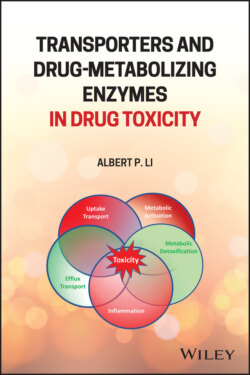Читать книгу Transporters and Drug-Metabolizing Enzymes in Drug Toxicity - Albert P. Li - Страница 90
3.12 Troglitazone (Rezulin®)
ОглавлениеTroglitazone (2,4‐thiazolidinedione) was the first peroxisome proliferator‐activated receptor (PPAR) antagonist insulin sensitizer developed for the treatment of type 2 diabetes. It received FDA approval for marketing in 1997, and was withdrawn from the market in 2000 after reports of at least 12 cases of severe liver injuries [209], leading to deaths or a need for liver transplantation [209–211]. Troglitazone was one of the first drugs associated with idiosyncratic hepatotoxicity [212] generally classified as drugs with severe hepatotoxicity at a low incidence than cannot be readily detected in regulatory clinical trials. The reported incidences are 14 [213] and 19 [214] per 100 000 patients. Upon introduction of troglitazone to the market in March 1997 to its market withdrawal in March 2000, 83 cases of liver failure were reported with an estimated exposed population of 1.92 million [215]. Signs of troglitazone hepatotoxicity were observed during prospective clinical trials, with 1.9% of the patients exhibiting signs of liver injuries, leading to a recommendation of frequent monitoring of liver enzyme chemistries for the administered patients before the official withdrawal of the drug from the market [209]. Liver enzyme elevation would resolve with or without stoppage of drug administration. Routine monitoring of liver enzymes, however, did not prevent the onset of troglitazone‐induced liver failures [215].
